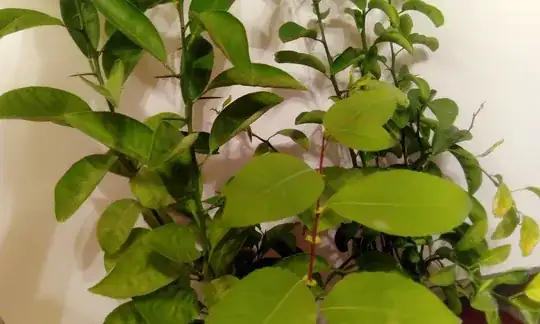This plant is a Croton. Members of the spurge family or Euphorbiaceae. They are a common house plant and will grow outside in Florida where they can be used as hedging.
Your plant is either under or overwatered. I am leaning towards overwatering as underwatering usually shows dry papery leaves whereas your plant's leaves seem to have water.
I recommend taking it out of the pot and looking at the roots. If they are firm and white or brown you are most likely underwatering it. If they are black and mushy then it is overwatering.
You say you had it growing in water. This is unusual as this is not a water plant. Cuttings should only be kept in water long enough to root and then transplanted to soil.
You should also check closely on the underside of the leaves for spider mites which look like tiny grains of salt and are quite common on crotons. Treat with 5 ml dish soap to 1 liter of water three times at five to seven day intervals by
soaking a rag in water and soap solution and rubbing the top and bottom of the leaves
Based on the additional information in your comments I suspect this is a case of letting the transplants getting too dry due to inadequate roots while the soil remains too wet.
The stems you are rooting are large and crotons need a lot of moisture. They wilt when dry and staying wilted weakens the plant.
If you want to root from cuttings after the transplant you need to keep the humidity high and the drainage should be excellent. A tray of sand or perlite with a transparent tent to promote more humidity should do the job. Taking smaller cuttings would help as well.
Only move the cuttings from the rooting medium after they have a large and well established root system. Maintain the humidity and then gradually decrease it as the plant roots in you soil mix


